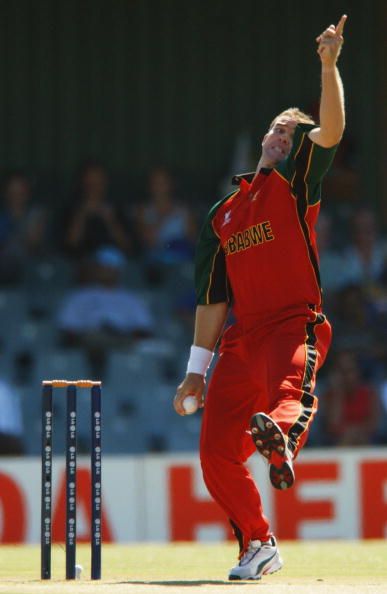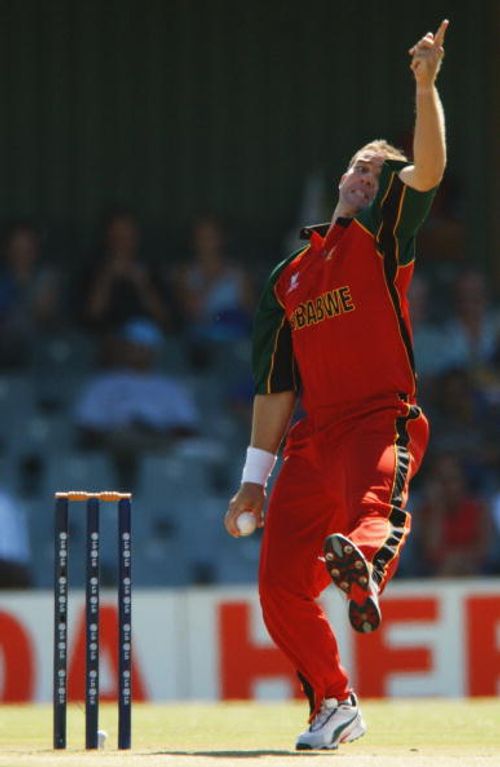
Looking back at Zimbabwe cricket: Part 2

Part 1 can be found here.
The daunting fall
It was the rise of an expected fall in Zimbabwean cricket. Mounting politicization in cricket selection policies, continuous upsetting performances and the growing rift between the players and the board led to a heated turmoil immediately after the 2003 World Cup. This was the Cup which was co-hosted by Zimbabwe and South Africa. It was the stage where they had to be the dark horses who gave jitters to the big guns. All the hopes of sporting fans were dashed as an infamous event occurred in this tournament.
The black armband protest by the Zimbabwean players during this tournament is unforgettable and only showed the woeful future of this promising young side. It was a mark of mourning the death of democracy in the country. A total of whopping 14 players, led by Heath Streak, went to the media with a backlash at the board and were eventually sacked. Instead of reaching a mature settlement indoors, the Board went for self-destruction with this move. The final nail in the coffin was ICC disallowing Zimbabwe its Test status.
In a move to help the beleaguered side, Heath Streak was reinstated back in the squad but political tensions continued to hover around. There were severe allegations that the players spent out of their designated budgets on overseas tours. Operation Murambatsvina also intervened, which further dampened the cricketing side.
Finally in 2005, an agreement was signed which resulted in many rebels returning to the national side. Was this a breath of new life in the team? The team sank to unprecedented lows, being victims to humiliating innings defeats at the hands of the South Africans. To add to their woes, they were lambs on home soil and became only the second side in Test history (after India in 1952) to be bowled out twice in the space of one day against New Zealand.
The writing was on the wall, as after the series loss against India at home in September, Heath Streak announced his retirement from all forms of international cricket. It was back to square one as Tatenda Taibu was appointed as the new captain. The youngest Test captain ever in the history of the game was a gifted wicketkeeper with natural acrobatic skills. However, pressure took toll on him and he announced his retirement in a rather short international career of 11 years.
The rise, hopefully?
Talented opener Brendan Taylor was announced as captain of all 3 formats after yet another disastrous 2011 World Cup campaign. He replaced Elton Chigumbura who still remains one of the key players in the team. This year marked their return to Test cricket and they kicked off with a comfortable win over Bangladesh. New sponsors and upgrades in the county clubs and grounds were a welcome move to ensure a secured future of the players and lead the way forward to form a better cricketing unit.
In the ODI segment, despite losing heavily to Pakistan and New Zealand, their unpredictable form did throw up a welcome surprise. The young side ended a 12-match losing streak by chasing down a whopping 328 in 50 overs against New Zealand with contributions from the entire team. Malcolm Waller finished with a 99* which proved the team came before personal milestones. In June 2012, the team tasted sweet success in a triangular T20 tournament wherein South Africa and Bangladesh featured. They won the tournament comprehensively and in style.
Their recent cricketing exploits have been poor, as a rampaging Indian side ensured the series finished 5-0 in favour of the visitors. consistency has not been on their side but the series has surely thrown up some talented players like Sikander Raza Butt, Masakadza and Kyle Jarvis who had their moments of fame. What we now expect from these diligent and perseverant players is to reach new highs in their next series against Pakistan. Only this time, the world is on their side and they aren’t the lone minnows we used to know, anymore.